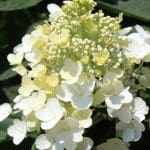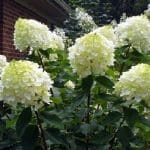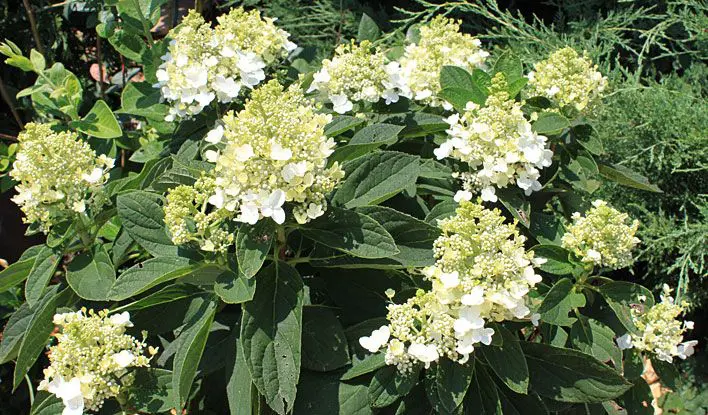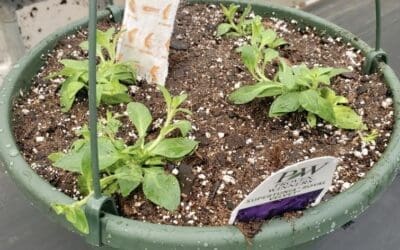Two New Hydrangea Varieties Available
Few flowers are as consistently showy as those of the deciduous shrubs in the genus Hydrangea with their enormous clusters of summer-blooming white, pink or blue flowers. The most attractive blossoms are sterile, that is they are unable to produce seeds; they are flat, four petaled and one half to one inch across. Some varieties of Hydrangea bear clusters containing only sterile flowers, but most have clusters that include fertile ones, tiny star-like blossoms usually at the centers of the clusters.
Hydrangea paniculata, commonly known as panicled hydrangea, produces large creamy white sterile flower clusters when they open and gradually become pink. Two new varieties of H. paniculata are now available, one hybridized in the United States, the other from the Netherlands.
 ‘Baby Lace’ Hydrangea was developed by one of the world’s foremost horticulturalists and breeders, Dr. Michael A. Dirr, in association with the University of Georgia Research Foundation. ‘Baby Lace’ was selected for easy growth, mildew resistance and beautiful petite, lacy white blooms set against dark green foliage. Its smaller size of four by four feet makes it ideal for container plantings, low groupings and in mass plantings.
‘Baby Lace’ Hydrangea was developed by one of the world’s foremost horticulturalists and breeders, Dr. Michael A. Dirr, in association with the University of Georgia Research Foundation. ‘Baby Lace’ was selected for easy growth, mildew resistance and beautiful petite, lacy white blooms set against dark green foliage. Its smaller size of four by four feet makes it ideal for container plantings, low groupings and in mass plantings.
 ‘Silver Dollar’ Hydrangea was hybridized by Pieter Zwijnenburg from Boskoop, the Netherlands, and is a foot taller and wider than ‘Baby Lace’. ‘Silver Dollar’ received the Royal Horticultural Society’s Award of Merit in 2009. Similar to the popular ‘Limelight’ and ‘Little Lime’ which were also hybridized by Pieter Zwijnenburg, ‘Silver Dollar’ grows compact, with strong stems holding up dense trusses of embellished white blooms that mature to take on soft hues of pink and lime in August.
‘Silver Dollar’ Hydrangea was hybridized by Pieter Zwijnenburg from Boskoop, the Netherlands, and is a foot taller and wider than ‘Baby Lace’. ‘Silver Dollar’ received the Royal Horticultural Society’s Award of Merit in 2009. Similar to the popular ‘Limelight’ and ‘Little Lime’ which were also hybridized by Pieter Zwijnenburg, ‘Silver Dollar’ grows compact, with strong stems holding up dense trusses of embellished white blooms that mature to take on soft hues of pink and lime in August.
Hydrangea paniculata grows best in half shade to full sun in a fertile, porous soil. Avoid overly dry or waterlogged soils. As its name implies, hydrangeas are water-loving; water well to keep them from wilting during dry spells. The plant should be pruned in late winter or early spring to restrict size and enhance flowering.























0 Comments